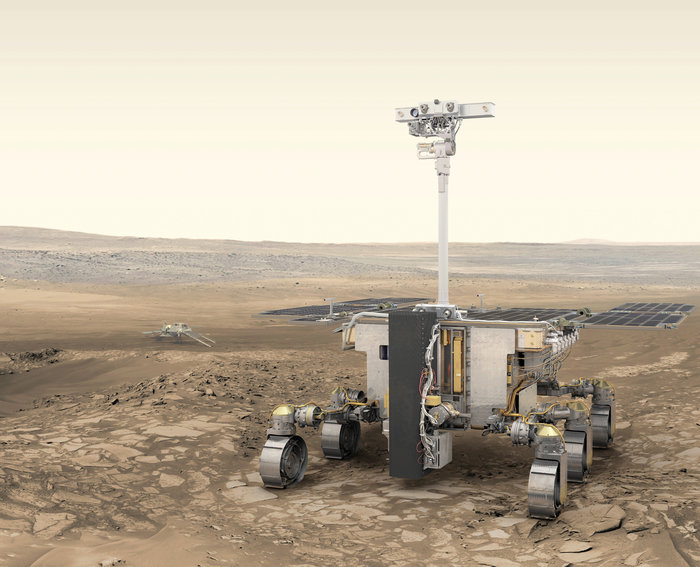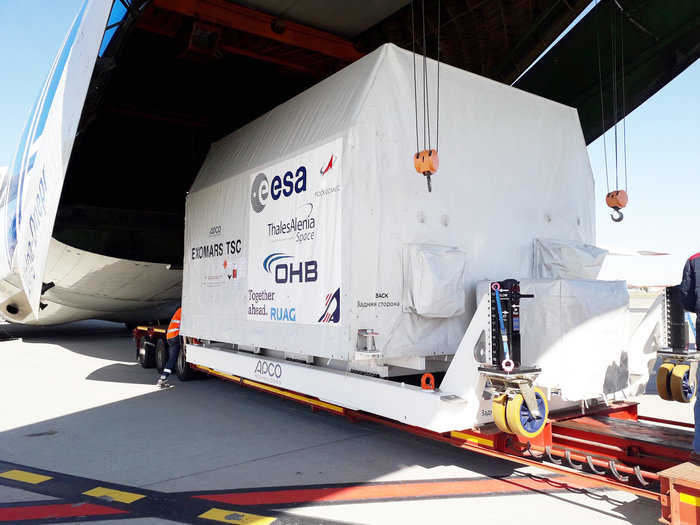
Less than two years from now, Rosalind Franklin will roll off Kazachok onto the red dirt of Mars.
Rosalind Franklin is the European rover that will hunt for signs of Red Planet life after touching down in February 2021. The moniker, which was announced last month, honors the pioneering crystallographer who helped figure out the double-helix structure of DNA.
And Kazachok is the newly revealed name of the Russian-built landing platform that will serve as Rosalind Franklin's base, while also doing a lot of science work of its own.
Related: How the European-Russian ExoMars Missions Work (Infographic)
"Kazachok literally means 'little Cossack,' and it is a lively folk dance," European Space Agency (ESA) officials said in a statement today (March 21).
That dance, in turn, takes its name from the Cossack people. The Cossacks originally hailed from "the northern hinterlands of the Black and Caspian seas. They had a tradition of independence and finally received privileges from the Russian government in return for military services," according to the Encyclopedia Britannica.
Together, Rosalind Franklin and Kazachok comprise the second phase of the two-part ExoMars program, a collaboration between ESA and Roscosmos, Russia's federal space agency. Phase 1 launched the methane-sniffing Trace Gas Orbiter (TGO) and a landing demonstrator called Schiaparelli in March 2016.
Get the Space.com Newsletter
Breaking space news, the latest updates on rocket launches, skywatching events and more!
TGO arrived safely and is studying Mars from above. Schiaparelli, however, slammed hard into the Red Planet in October 2016 after suffering a data glitch. (And since we're talking about names, the lander took its moniker from Italian astronomer Giovanni Schiaparelli, who cataloged many Martian features through a telescope in the 19th century. Among these were channels, or "canali" in Italian; this term was mistranslated into English as "canals," helping spur speculation about intelligent life on Mars.)
Rosalind Franklin will search for signs of ancient Red Planet life, aided by a drill that can reach up to 6.5 feet (2 meters) underground. The stationary Kazachok will study the Martian climate and atmosphere, measure radiation levels, and look for evidence of water in the platform's surroundings, ESA officials said.

Kazachok arrived in Turin, Italy, from Russia on Tuesday (March 19). The landing platform and the rover have already passed a number of tests, but many more await the duo before their planned launch from Kazakhstan in July 2020.
"We have now a very challenging schedule of deliveries and tests both in Italy and France," François Spoto, ESA's ExoMars team leader, said in the same statement. "The coordination between the Russian and European teams is key to ... reach[ing] the Baikonur Cosmodrome [on time] in 2020."
NASA plans to launch its own life-hunting rover in July 2020. That robot is currently known as Mars 2020, but it will soon be named by a schoolchild following a nationwide competition, as has happened for other NASA rovers.
- The Evolution of NASA's Mars Rover Tires in Pictures
- Red Planet Express: 10 Ways Robots Move on Mars
- Robot Life on Mars! Meet the Machines Exploring the Red Planet Today
Mike Wall's book about the search for alien life, "Out There" (Grand Central Publishing, 2018; illustrated by Karl Tate), is out now. Follow him on Twitter @michaeldwall. Follow us on Twitter @Spacedotcom or Facebook.
Join our Space Forums to keep talking space on the latest missions, night sky and more! And if you have a news tip, correction or comment, let us know at: community@space.com.

Michael Wall is a Senior Space Writer with Space.com and joined the team in 2010. He primarily covers exoplanets, spaceflight and military space, but has been known to dabble in the space art beat. His book about the search for alien life, "Out There," was published on Nov. 13, 2018. Before becoming a science writer, Michael worked as a herpetologist and wildlife biologist. He has a Ph.D. in evolutionary biology from the University of Sydney, Australia, a bachelor's degree from the University of Arizona, and a graduate certificate in science writing from the University of California, Santa Cruz. To find out what his latest project is, you can follow Michael on Twitter.









